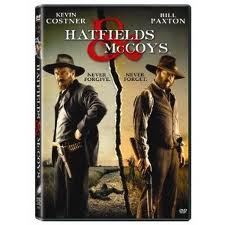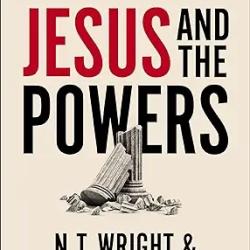Pikeville is a long way from Lexington, hard on the West Virginia border near the Big Sandy (and the Tug) River. Most everyone in America at one time or another has heard of the phrase ‘like the Hatfields and the McCoys’ as a euphemism for an ongoing, festering family feud, or have even used the phrase ‘the real McCoy’, not knowing where it probably came from. Well the McCoys were from the Kentucky side of the river, not so the Hatfields so we are talking about an inter-state squabble, which was far more than a dispute. Indeed, any film of this feud could well have been called ‘There Will be Blood’ as revenge killing after revenge killing led eventually to the near demise of both these families and to the intervention of the government. Indeed, the intra-family warfare went on for almost thirty years (1863-91, and beyond actually). It was a sad revisiting of the story of Cain and Abel, or better said, Lamech, and the saddest part of the story is that at least the McCoys, including the head of the family Randolph, were, or claimed to be Christians. If so, they often behaved in remarkably unChristian ways.
We now have a new production of the story of the Hatfields and McCoys thanks to the efforts of Kevin Costner who is supported with a fine cast that includes, among others, Mare Winningham and Tom Berenger. The acting in this three part drama is superb. It’s the story itself which is sordid and sad. It is now available on Kindle and as an Amazon Instant Video (etc.) and it is well worth the watch. Indeed, by some estimates it is the most watched cable TV drama ever, or at least ever on the History Channel. There is no corner cutting in this film. It has the image and feel of reality, not to mention the Bluegrass music to support it.
I have decided we need a new category of film, call it “the Eastern”, as opposed to the Western. Yes, this is a story of frontier life, but it has nothing to do with the wild, wild West. It has to do with the wild, wild East as does the story of Dan’el Boone, or the beginning of the story of Davey Crockett, or the vast majority of the story of the Civil War which transpired overwhelmingly in the old South, not much in the North or anywhere West of the Mississippi. We Easterners need to ask for more stories about the frontier East. The Hatfields and McCoys is a good one (which in some way may even remind you in its setting of Deliverance) set as it is in the eastern mountains that involve the Cumberlands and the Appalachian chain. My favorite line in the movie comes from Rand’l McCoy’s wife as she was being sent off to the sanitarium here in Lexington. She is referring to the fact that they have lost too many children in the feud, and yet ole Rand’l has hardly allowed himself to grieve. She says “You have to let it break your heart, husband. If that most innocent part of you is not allowed to suffer, you cannot change. You will simply disappear.”
I’ve thought about that a lot since I heard, as it applies as well to me with the loss of our Christy as to anyone else who has lost a child. There can be no pretending it never happened when something like that happens. You have to process your grief, allow it to affect you and express your feelings, and then mend, and move on, never again the same person.
Here below is a part of this sad tale, as told on Wikipedia (accessed Aug. 28, 2012).
“Asa Harmon McCoy, despised by Jim Vance, uncle of Devil Anse Hatfield, for joining the Union Army during the American Civil War, was discharged from the army early because of a broken leg. He returned home to a warning from Vance that Harmon could expect a visit from Devil Anse’s Wildcats. Frightened by gunshots as he drew water from his well, Harmon hid in a nearby cave, supplied with food and necessities each day by his slave, Pete, but the Wildcats followed Pete’s tracks in the snow, discovered Harmon, and fatally shot him on January 7, 1865.
At first, Wildcat leader Devil Anse Hatfield was the prime suspect, but later, after he was confirmed to have been confined to his bed, suspicion of guilt focused squarely on Vance, but in an era when Harmon’s military service was widely considered by many of the region’s inhabitants to be in and of itself an act of disloyalty, even Harmon’s own family believed that he had brought his murder upon himself.[citation needed] Eventually, the case withered, and no suspect was brought to trial.
The second recorded instance of violence in the feud occurred 13 years later, in 1878, after a dispute about the ownership of a hog: Floyd Hatfield had the hog, but Randolph McCoy said it was his. The pig was only in the fight because some Hatfields believed that since the pig was on their land, it was theirs. The McCoys objected, saying that the “notches” (markings) on the pig’s ears were McCoy, not Hatfield marks. The matter was taken to the local Justice of the Peace, Anderson “Preacher Anse” Hatfield, who ruled for the Hatfields by the testimony of Bill Staton, a relative of both families. In June 1880, Staton was killed by two McCoy brothers, Sam and Paris, later acquitted on the grounds of self-defense.
“The feud escalated after Roseanna McCoy entered a relationship (courtship) with Devil Anse Hatfield’s son Johnson known as “Johnse” (spelt “Jonce” in some sources), leaving her family to live with the Hatfields in West Virginia. Roseanna eventually returned to the McCoys, but when the couple tried to resume their relationship, Johnse Hatfield was arrested by the McCoys on outstanding Kentucky bootlegging warrants. He was freed from McCoy custody only when Roseanna made a desperate midnight ride to alert Devil Anse, who organized a rescue party. The Hatfield party surrounded the McCoys and took Johnse back to West Virginia before he could be transported to the Pikeville, Kentucky county seat, for justice the next day.
“Despite what was seen as a betrayal of her family on his behalf, Johnse Hatfield thereafter abandoned the pregnant Roseanna for her cousin, Nancy McCoy, marrying her in 1881.
“The escalation continued in 1882 when Ellison Hatfield, brother of Devil Anse, was killed by three of Roseanna McCoy’s young brothers: Tolbert, Pharmer, and Bud. Ellison was stabbed 26 times and finished off with a shot during an election day fight that took place in Kentucky. The McCoy brothers were initially arrested by Hatfield constables and were taken to Pikeville for trial. Unbeknowst, Devil Anse Hatfield organized a large group of followers and intercepted the constables and their McCoy prisoners before they reached Pikeville. The brothers were taken by force to West Virginia to await the fate of mortally wounded Ellison Hatfield, and when Ellison finally died from his injuries, the McCoy brothers were themselves murdered in turn. They were tied to pawpaw bushes, where each was shot numerous times. Their bodies were described as “bullet-riddled”. Naturally, this escalated the vendetta further.
“The feud reached its peak during the 1888 New Year’s Night Massacre. Several members of the Hatfield clan surrounded the McCoy cabin and opened fire on the sleeping family. The cabin was set on fire in an effort to drive Randolph McCoy into the open. He escaped by making a break for it, but two of his children were murdered, and his wife was beaten and left for dead. The remaining McCoys moved to Pikeville to escape the West Virginia raiding parties.
“Between 1880 and 1891, the feud claimed more than a dozen members of the two families, becoming headline news around the country, and compelling the governors of both Kentucky and West Virginia to call up their state militias to restore order.[citation needed] On one occasion, the Governor of West Virginia even threatened to have his militia invade Kentucky. In response, Kentucky Governor S. B. Buckner sent his Adjutant General Sam Hill to Pike County to investigate the situation. Nearly a dozen died, and at least 10 people were wounded.
“In 1888, Wall Hatfield and eight others were arrested by a posse led by Frank Phillips and brought to Kentucky to stand trial for the murder of Alifair McCoy, killed during the New Year’s Massacre. She had been shot after exiting the burning house. Because of issues of due process and illegal extradition, the United States Supreme Court became involved (Mahon v. Justice, 127 U.S. 700 (1888)).[10] The Supreme Court ruled 7–2 in favor of Kentucky, holding that, even if a fugitive is returned from the asylum state illegally instead of through lawful extradition procedure, no federal law prevents him from being tried. Eventually, the men were indeed tried in Kentucky, and all were found guilty. Seven received life imprisonment, while the eighth, Ellison “Cottontop” Mounts, was executed by hanging. Thousands attended the hanging in Pikeville.”
I am sort of happy however to tell you the modern sequel to this story, namely the reconciliation of some McCoy descendents with some Hatfield descendents. Well… sort of. Here are some of the later chapters of this story as told on Wiki…..
“Great-great-great grandsons of feud patriarch Randolph McCoy, Bo McCoy of Waycross, Georgia, and his cousin, Ron McCoy of Durham, North Carolina, organized a historic joint family reunion of the Hatfield and McCoy families in 2000. More than 5,000 people attended the reunion, which attained national attention.
“In 2002, Bo and Ron McCoy brought a lawsuit to acquire access to the McCoy Cemetery which holds the graves of six family members, including five slain during the feud. The McCoys took on a private property owner, John Vance, who had restricted access to the cemetery.[24] While the McCoys claimed victory in the suit, as of 2003 the cemetery was still not open to the general public.[citation needed
“On June 14, 2003 in Pikeville, Kentucky, the McCoy cousins partnered with Reo Hatfield of Waynesboro, Virginia, to author an official truce between the families. Reo Hatfield said that he wanted to show that if the two families could reach an accord, others could also. He had said that he wanted to send a broader message to the world that when national security is at risk, Americans put their differences aside and stand united: “We’re not saying you don’t have to fight because sometimes you do have to fight,” he said. “But you don’t have to fight forever.” Signed by more than sixty descendants during the fourth Hatfield-McCoy Festival, the truce was touted as a proclamation of peace, saying “We ask by God’s grace and love that we be forever remembered as those that bound together the hearts of two families to form a family of freedom in America.” Governor Paul E. Patton of Kentucky and Governor Bob Wise of West Virginia signed proclamations declaring June 14 Hatfield and McCoy Reconciliation Day. Ron McCoy, one of the festival’s founders, said it is unknown where the three signed proclamations will be exhibited.
“The Hatfields and McCoys symbolize violence and feuding and fighting, but by signing this, hopefully people will realize that’s not the final chapter,” he said. Blood may be thicker than baptismal water, but sometimes grace and forgiveness happens even in a family feud.














